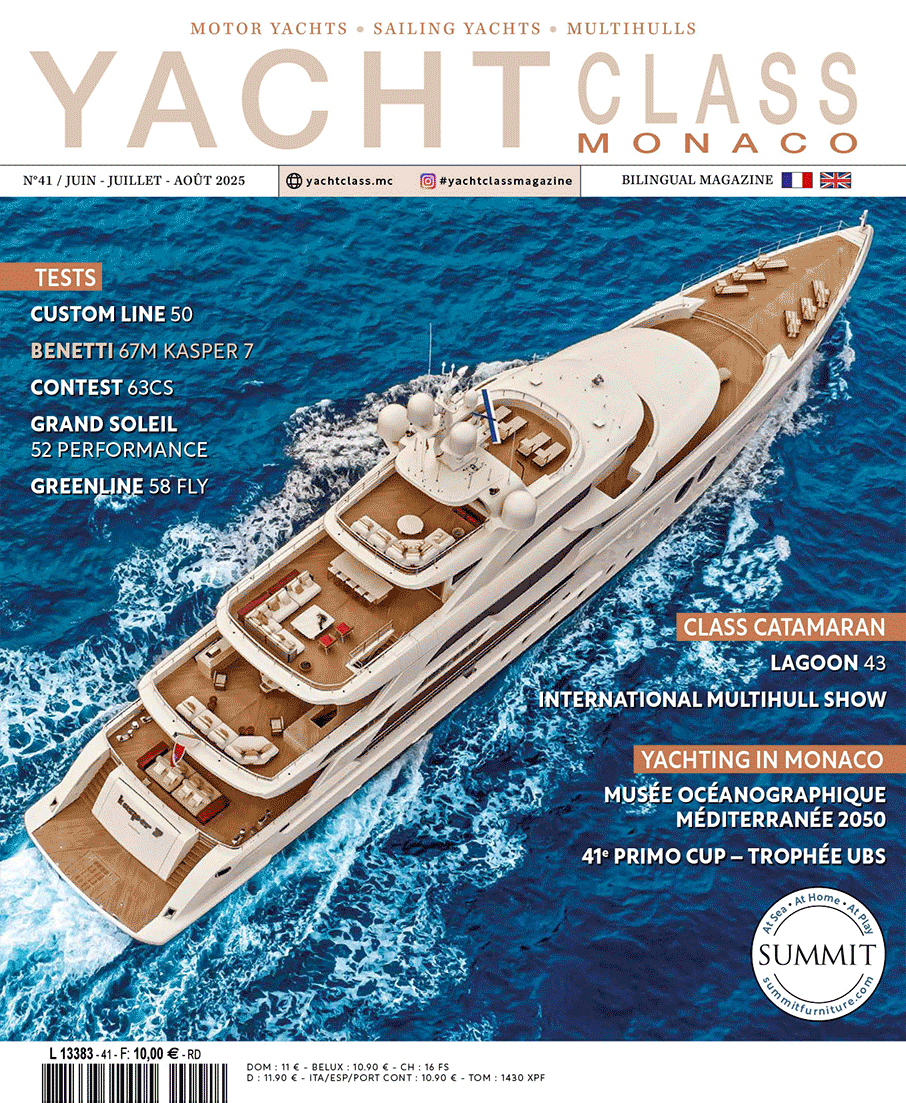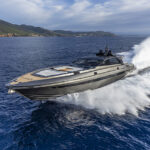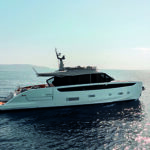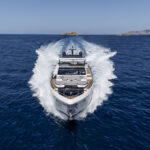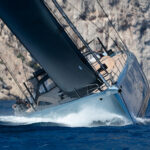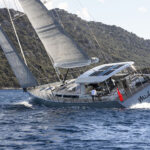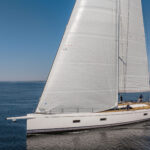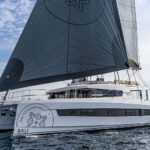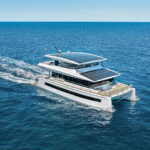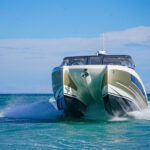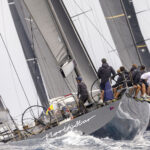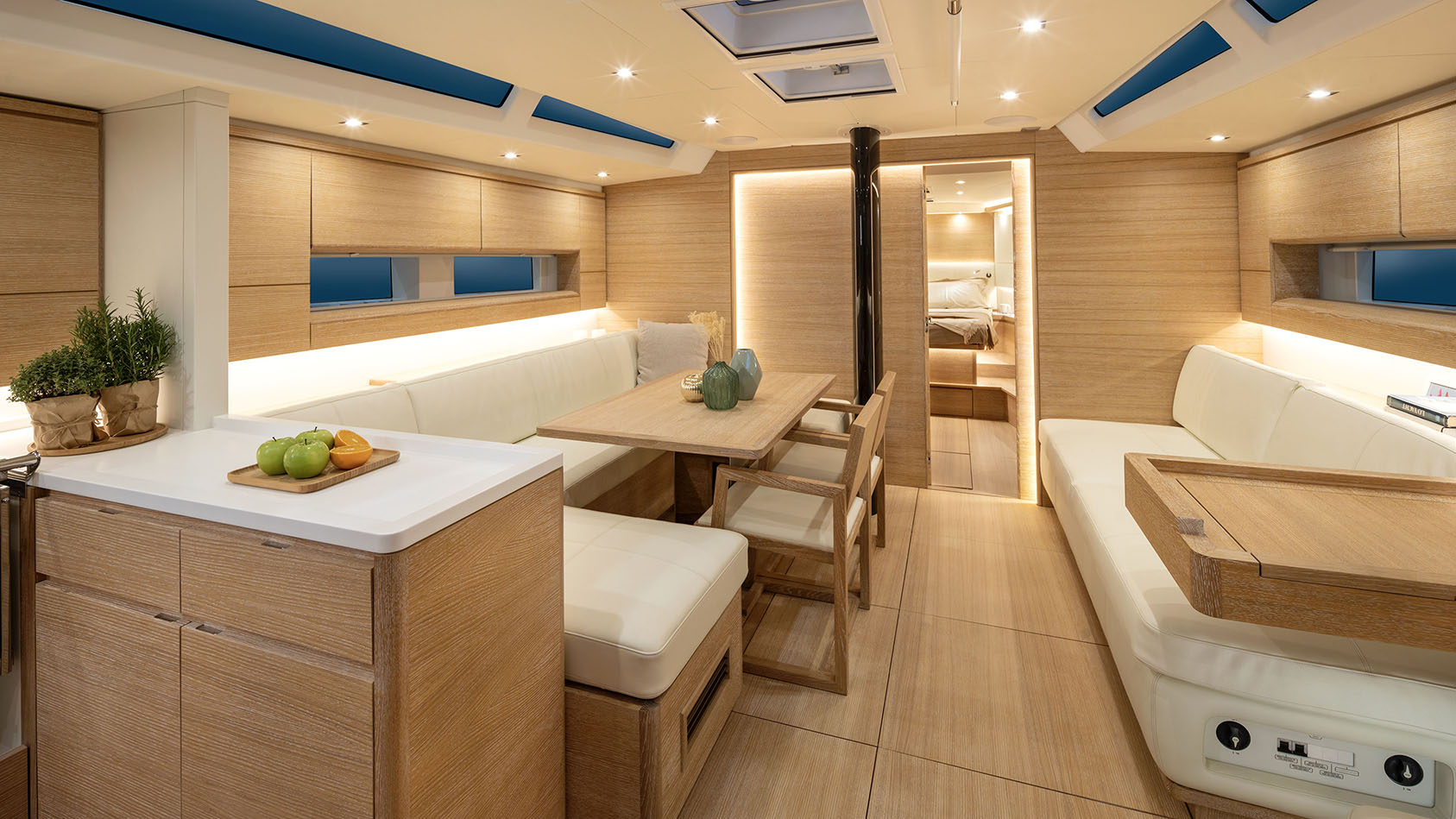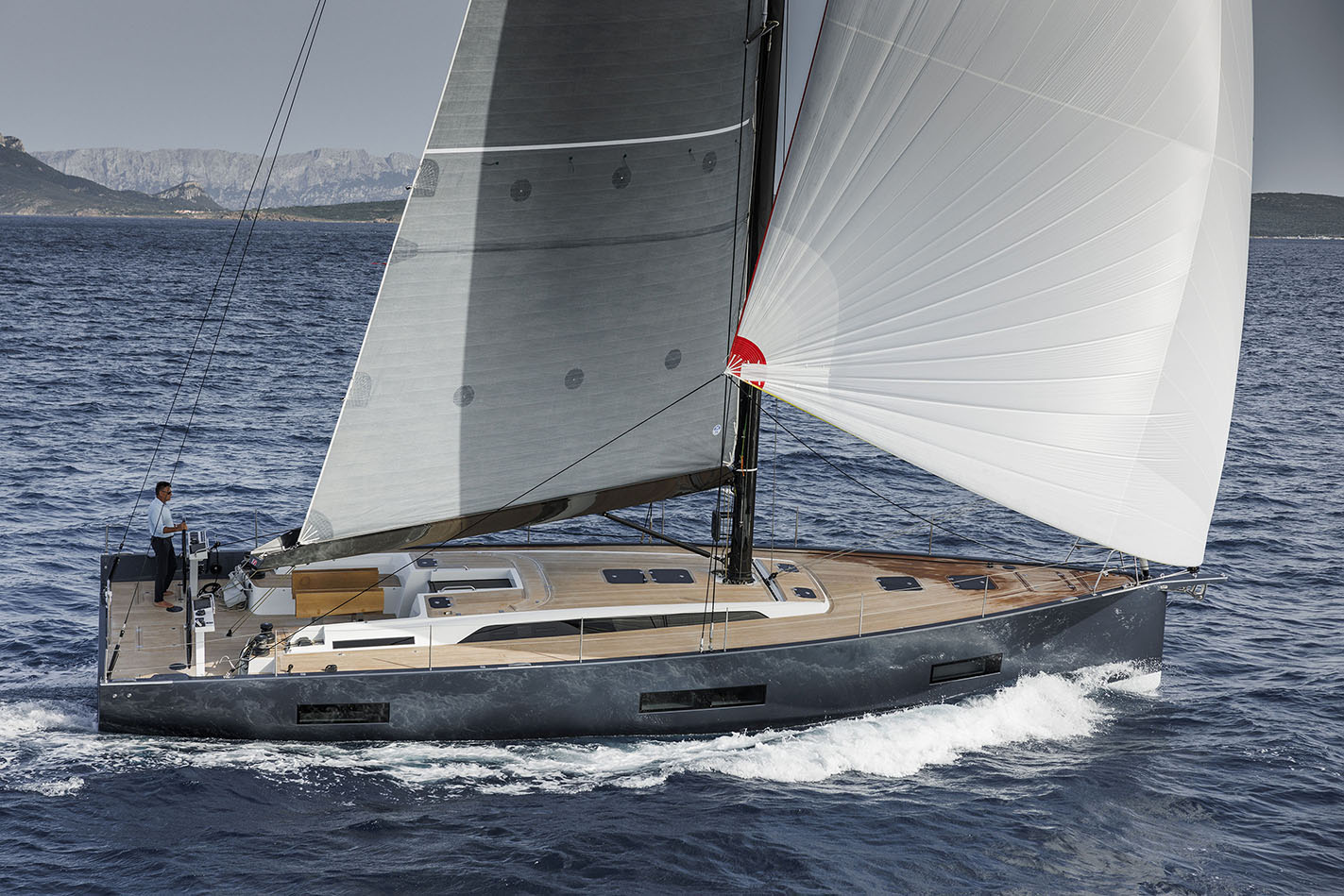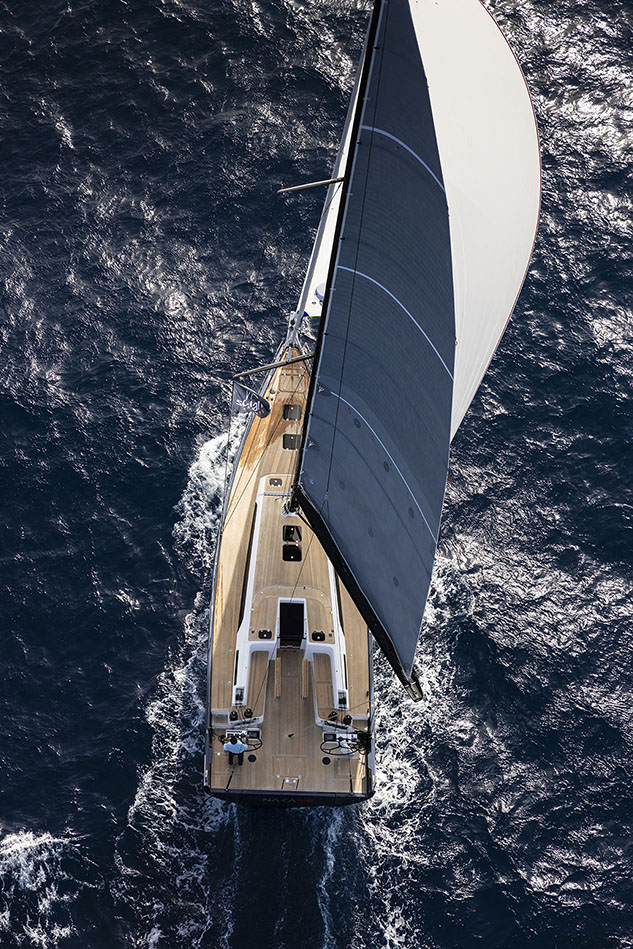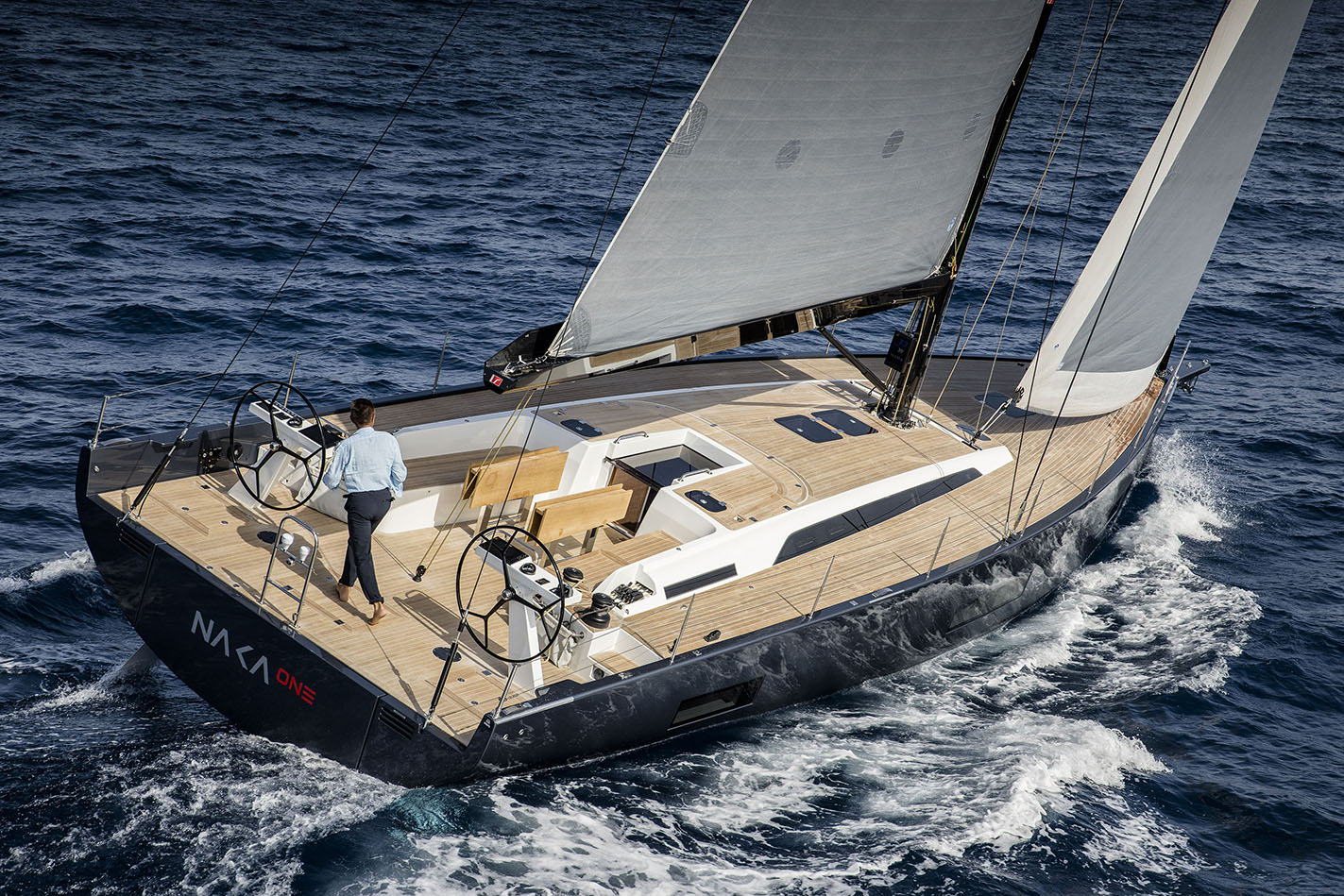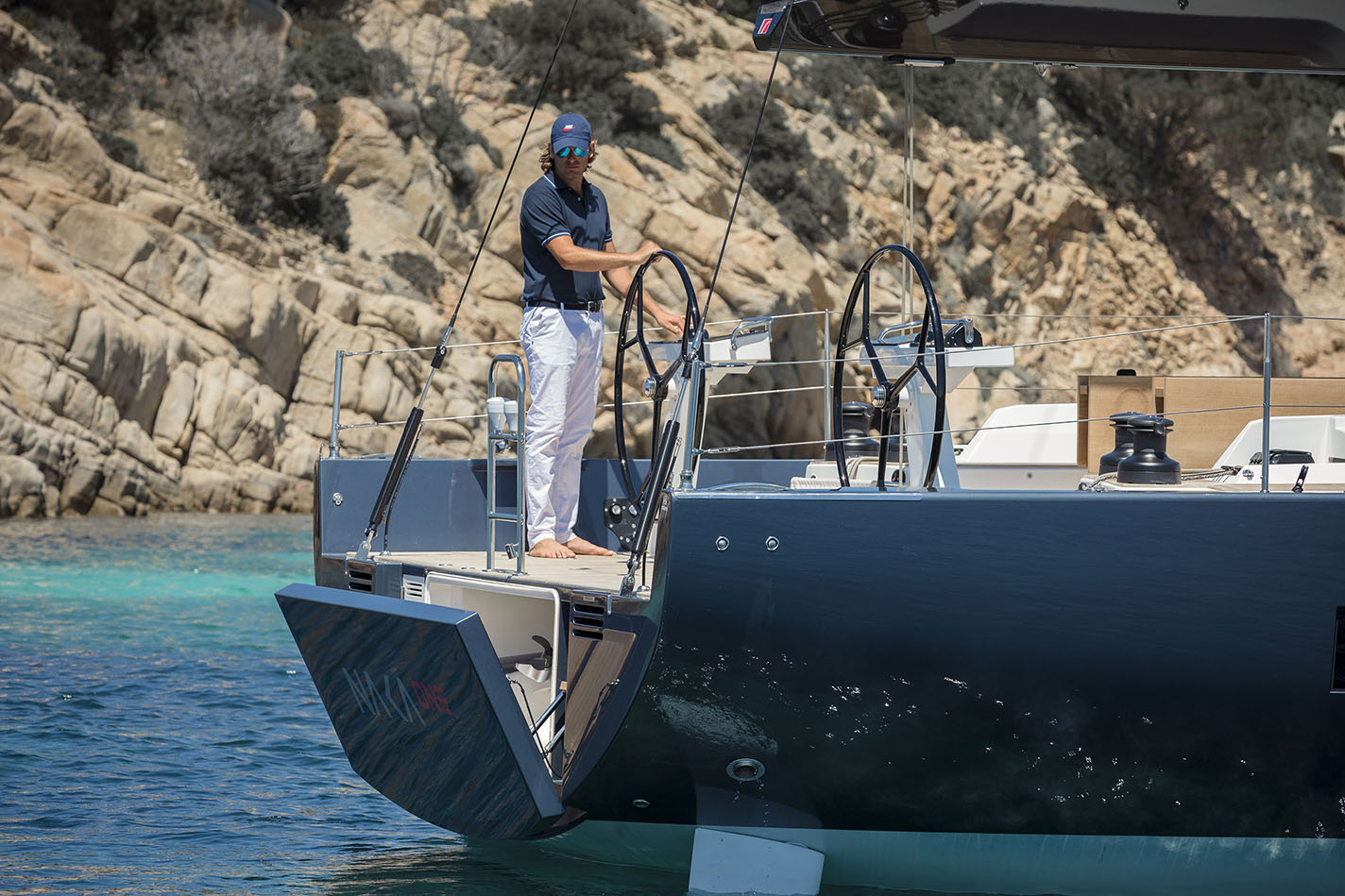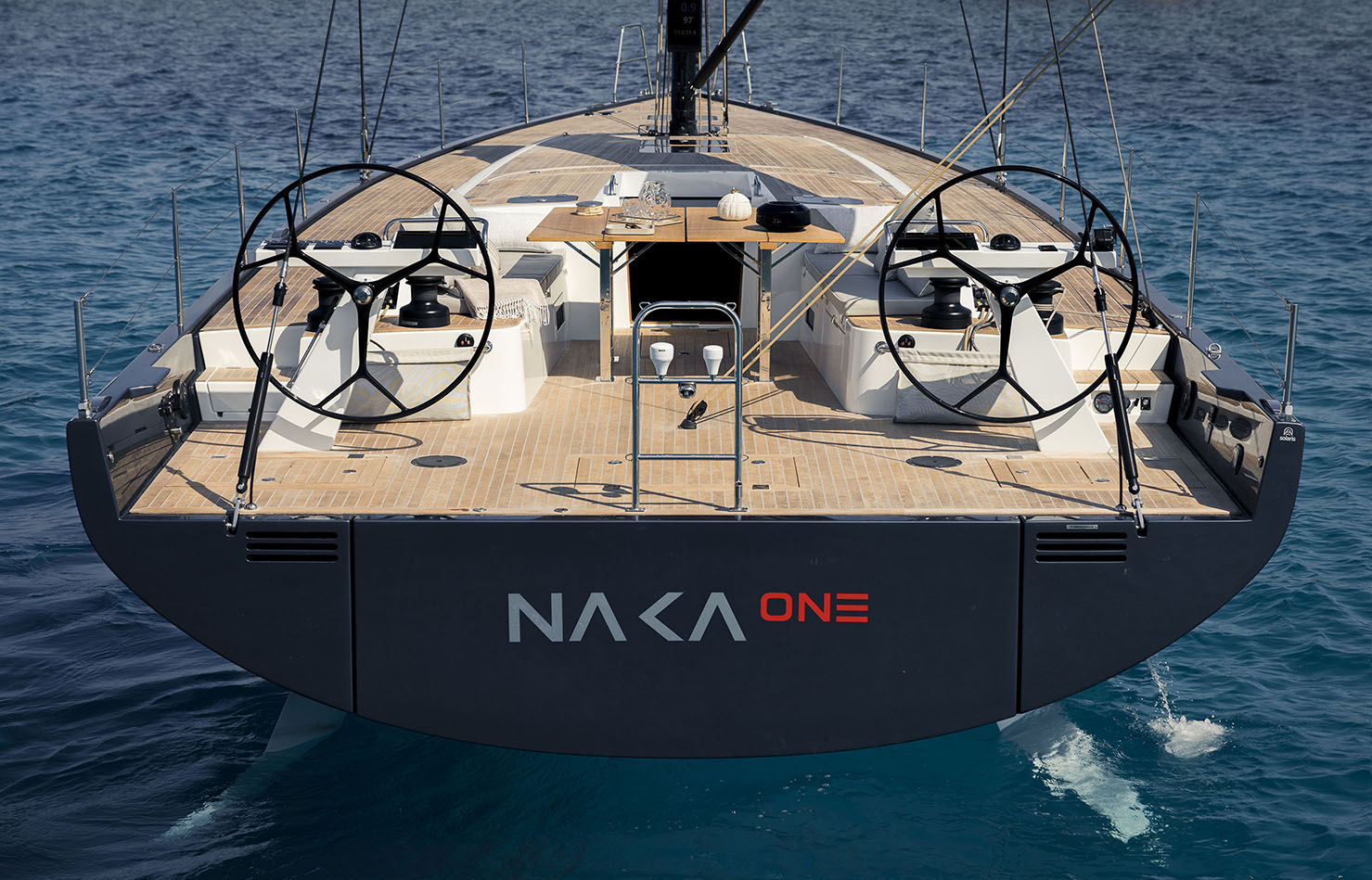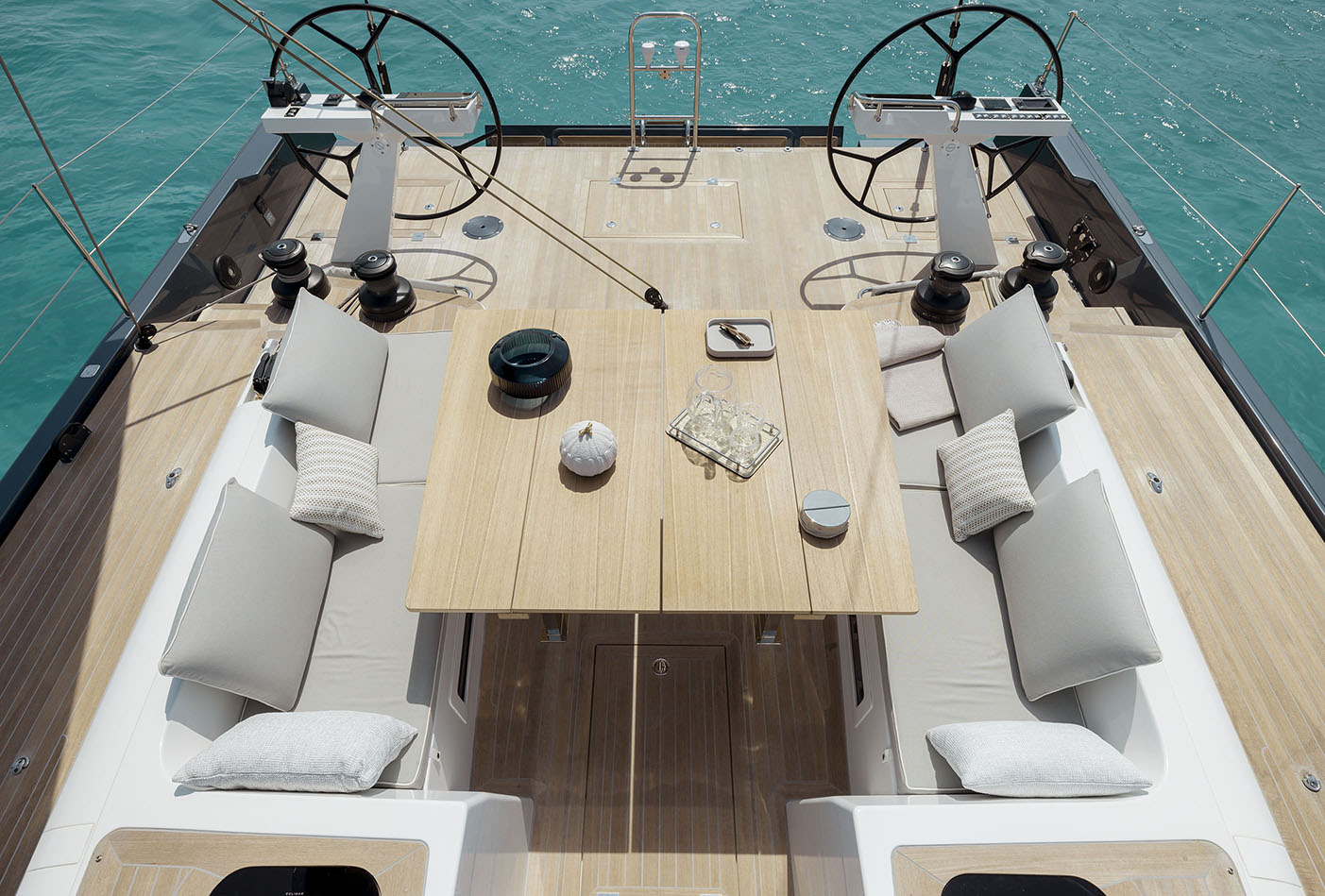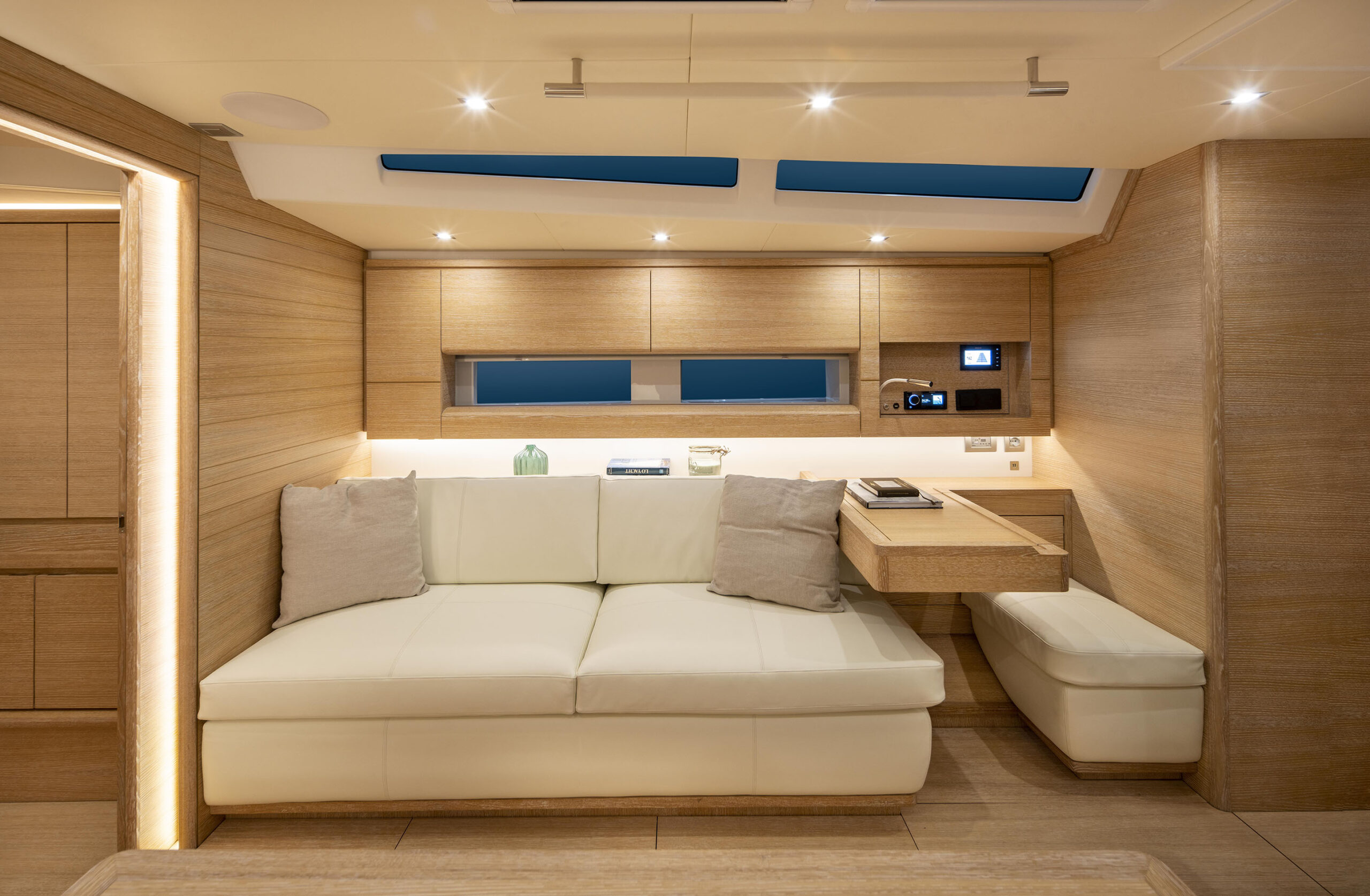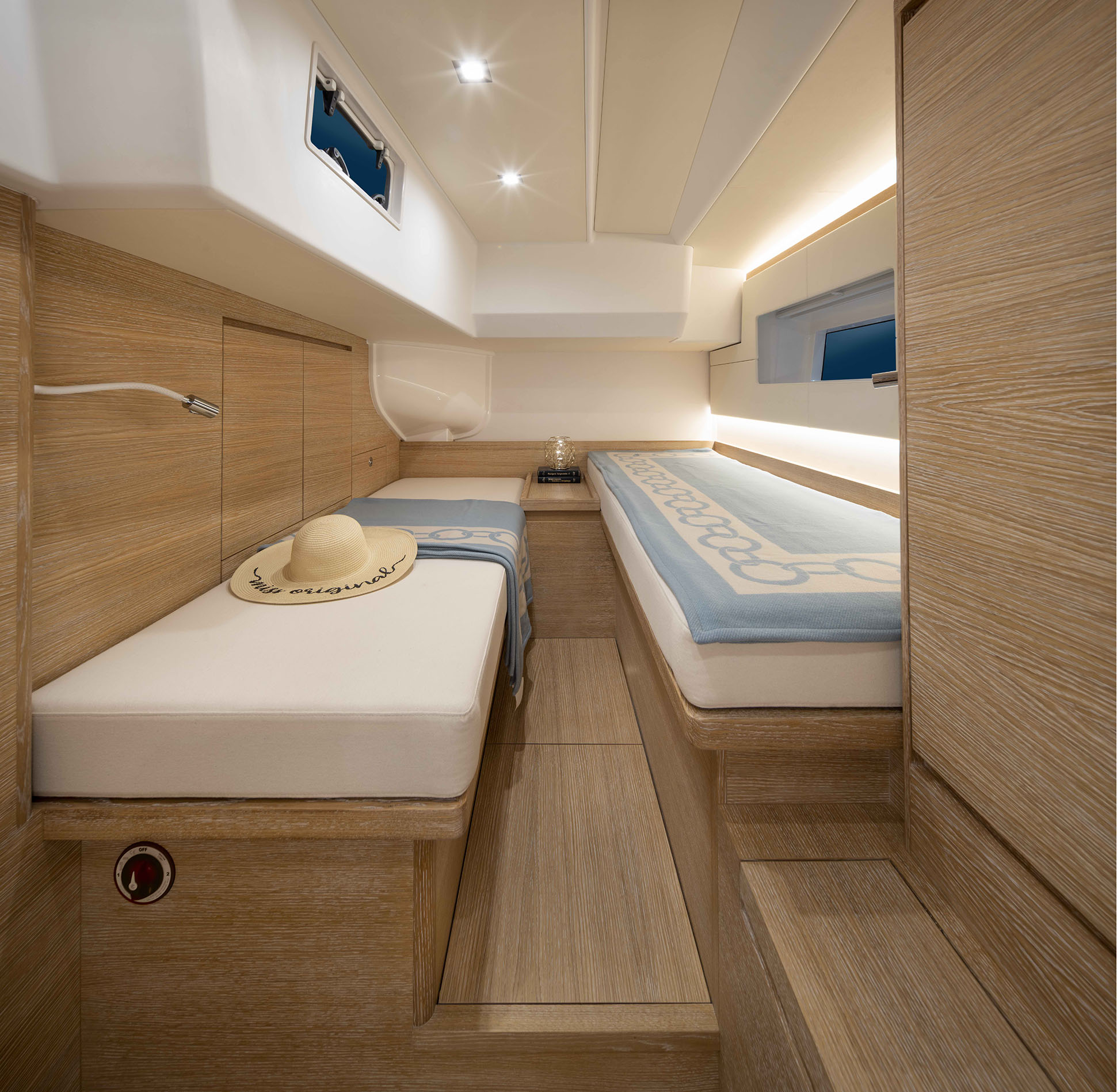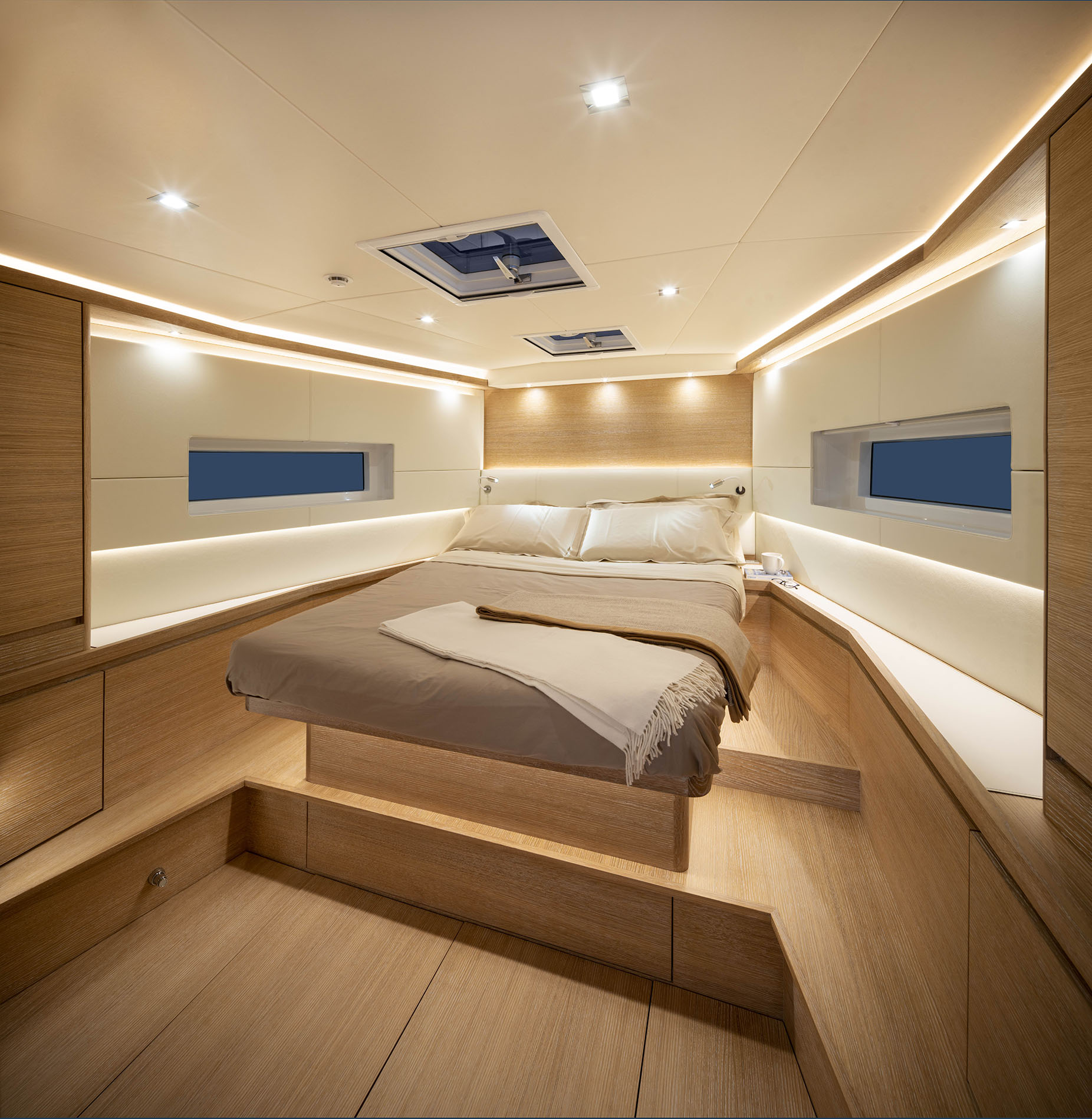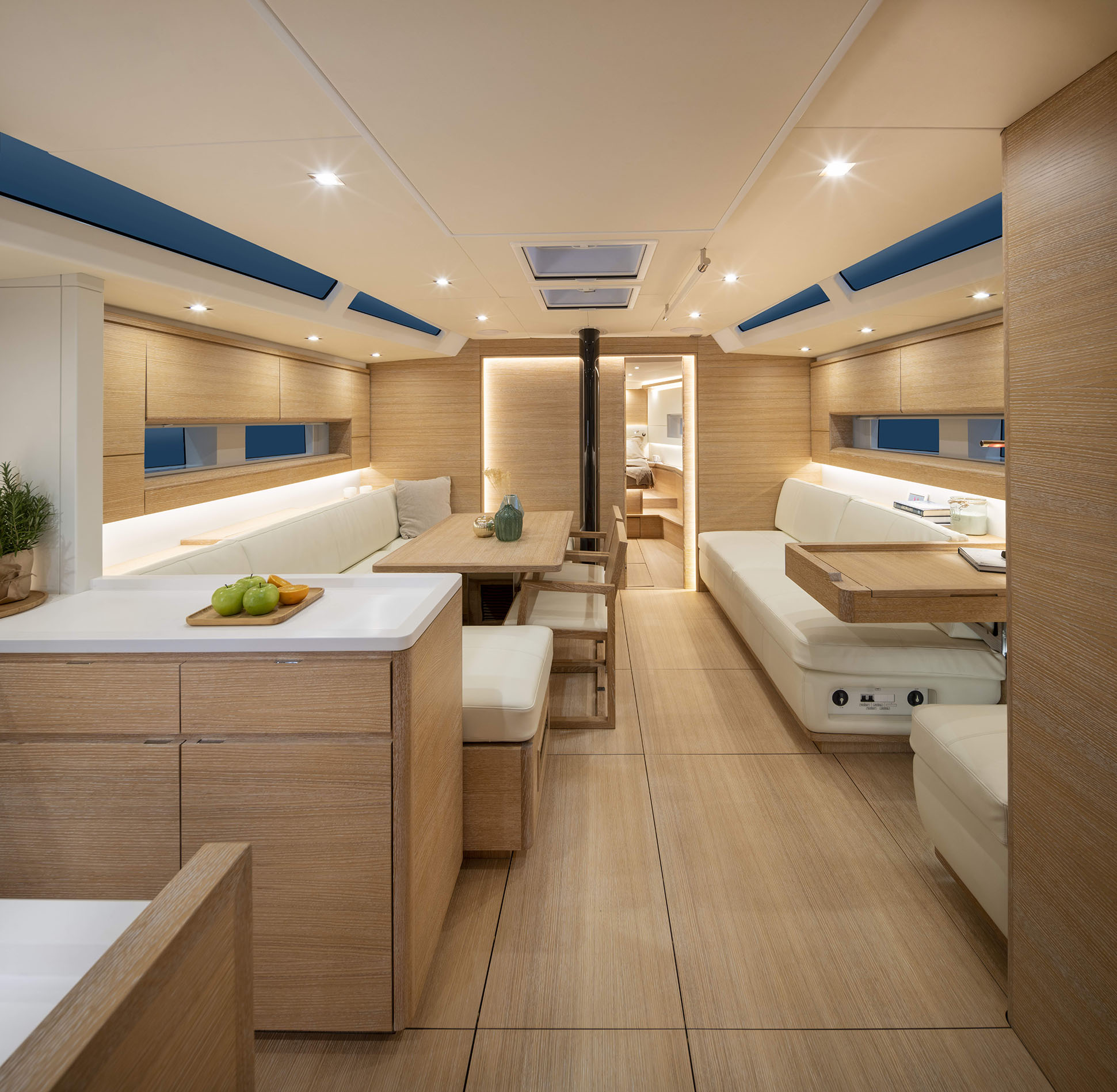Presentation
Yacht Class n°32 (mars-avril-mai 2023)
Solaris Yachts
The Italian shipyard Solaris is always looking for the perfect balance between racing performance and passenger comfort when cruising. The Solaris 50, designed by Javier Soto Acebal, seems capable of combining these two aspects thanks to a hull that looks a priori fast and with fittings designed for life at sea.
Written by : Christophe Varène – Photos : Guillaume Plisson et DR
The Italian shipyard Solaris is going through an intense phase of development. Externally, it has recently taken over the CNB brand, whose yachts will keep their own identity and offshore programme. Internally, it has given a new impetus to its range of cruising and racing yachts. The Solaris 50 belongs to the first part of the range, which goes from 40 to 60 feet. Then comes the RS series (for raised saloon) with four models from 64 to 111 feet. For its latest creations, Solaris has called on the Argentinean architect Javier Soto Acebal, whose designs range from neo-classical to sophisticated racing sailboats. The overall silhouette is sporty and sleek, with a straight or even slightly inverted bow, a reasonable freeboard and, above all, a beam almost constant on the aft half. This design optimizes downwind performance and allows the two rudders to be placed as far apart as possible from each other for greater precision at the helm when heeling upwind. A final asset of this constant width is a well-used interior volume. But we’ll get to that later.
A simple and efficient deck layout
From the aft cockpit, one is seduced by the excellent forward visibility offered by the clear deck layout. When the sprayhood is stored ahead of the companionway, there is nothing to obstruct the helmsman’s view, be it upwind or downwind. Similarly, from the aft area – where the winches and lines are led – two steps lead to the flush deck. The helmsman has two well-equipped consoles, with engine controls on starboard, to manage the navigation. The winches are located just forward for quick and easy access. As an option, winch controls can be placed on the consoles. There is no settee there which means that the helmsman has to steer standing up, but the bulwark rail – wide at the helm level – can be used to sit for a while. Part of the floor can be raised to ensure comfort and balance in navigation. As for the rigging, the standard self-tacking jib can be completed by a few options to optimise performance (carbon mast, bowsprit to fasten the Code 0 and asymmetric spinnaker…) or to simplify manoeuvres (furling boom…). The exterior layout of the Solaris 50 is also very passenger-friendly, thanks to two facing sofas and two tables with flaps between the navigation area and the companionway. When unfolded, these flaps allow six people to eat comfortably (or eight with the booster seats located at the ends) at the expense of the central passage. This space is protected during navigation by the backs of the benches and, if necessary, by the hood. Storage is provided by various lockers dispatched aft or towards the bow, where there is a sail locker. As mentioned previously, the large aft volume allows for a garage that can accommodate a 2.80 m long tender. To this end, the transom opens up to become a pleasant swim platform, useful when boarding or swimming. All on this deck has a seawtorhy design to meet the difficult challenge of satisfying both hardcore racing and relaxed cruising enthusiasts. For port maneuvering, or for an optimised cruising speed, the 75hp Volvo Penta D2 diesel configuration (optional) will undoubtedly be preferred to the standard 50hp one. And to make life easier and safer, an optional bow thruster is also available, as is a less essential stern thruster.
Seaworthy fittings
Let’s now take a look at the interior fittings. The companionway is a little steep with six steps to limit its bulkiness, but it is cleverly equipped with two vertical handrails. In the saloon, the first impression is positive thanks to its generous natural lighting provided by the numerous portholes placed where needed to enjoy the view whether seating or standing, at anchor or when heeling. At night, the various spotlights and strip LED lights, for controlled consumption, provide effective and refined direct or indirect lighting. Roseo Design’s work is also evident in the elegant and contemporary atmosphere created by the light woodwork, with horizontal wood grain, white upholstery and furniture. The upholstery can be customized to some extent, as Solaris has been working for a long time with the famous Italian leather sofa manufacturer, Poltrona Frau. The marine dimension is also present, as underline the handrail on the ceiling and the small fiddles on the chart table and worktop. The galley, on the port side at the foot of the companionway, is very compact, which is an asset as it allows a good position everywhere during navigation. Above it, and more particularly above the cooker, the deckhouse windows have two opening portholes providing effective ventilation. A small detail, the sink can be fitted close to the saloon, at the risk of wetting slightly the dining area, or to the companionway. The saloon houses a table with a U-shaped settee and two additional seats to port, facing a sofa located near the navigation station. Most of the instruments for navigation and technical management of the boat are concealed in a cupboard above the skipper’s seat. On each side of the staircase, a door leads to two double cabins (or two single beds for one of them) for guests. These two cabins share a head accessible from the saloon. Forward of the mast is the owner’s area. This large cabin has a classic layout with a large double bed against the forward bulkhead, allowing access from both sides. The remaining space features a storage and a wardrobe on starboard and the bathroom on the other side. Solaris offers another configuration with the double bed to the port side, a wardrobe and sofa on the other side, and the slightly larger head forward. Both configurations offer a warm and cosy atmosphere. Without ostentation, thanks to her practical and user-friendly configuration in navigation, the Solaris 50 does not lack assets to seduce seasoned sailors.
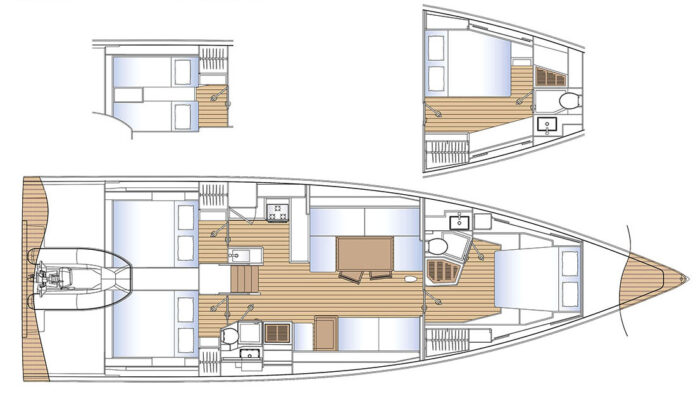
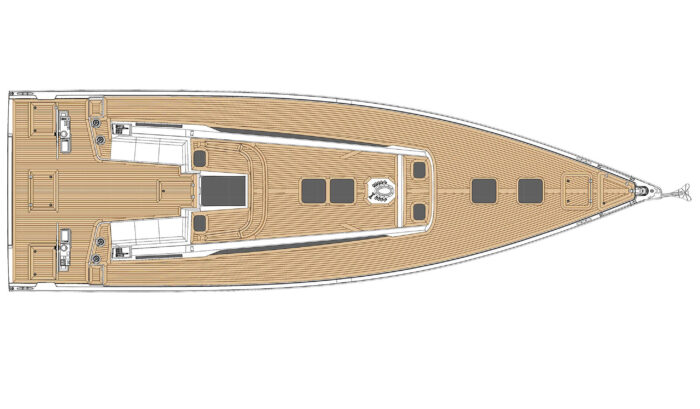
Technical sheet
